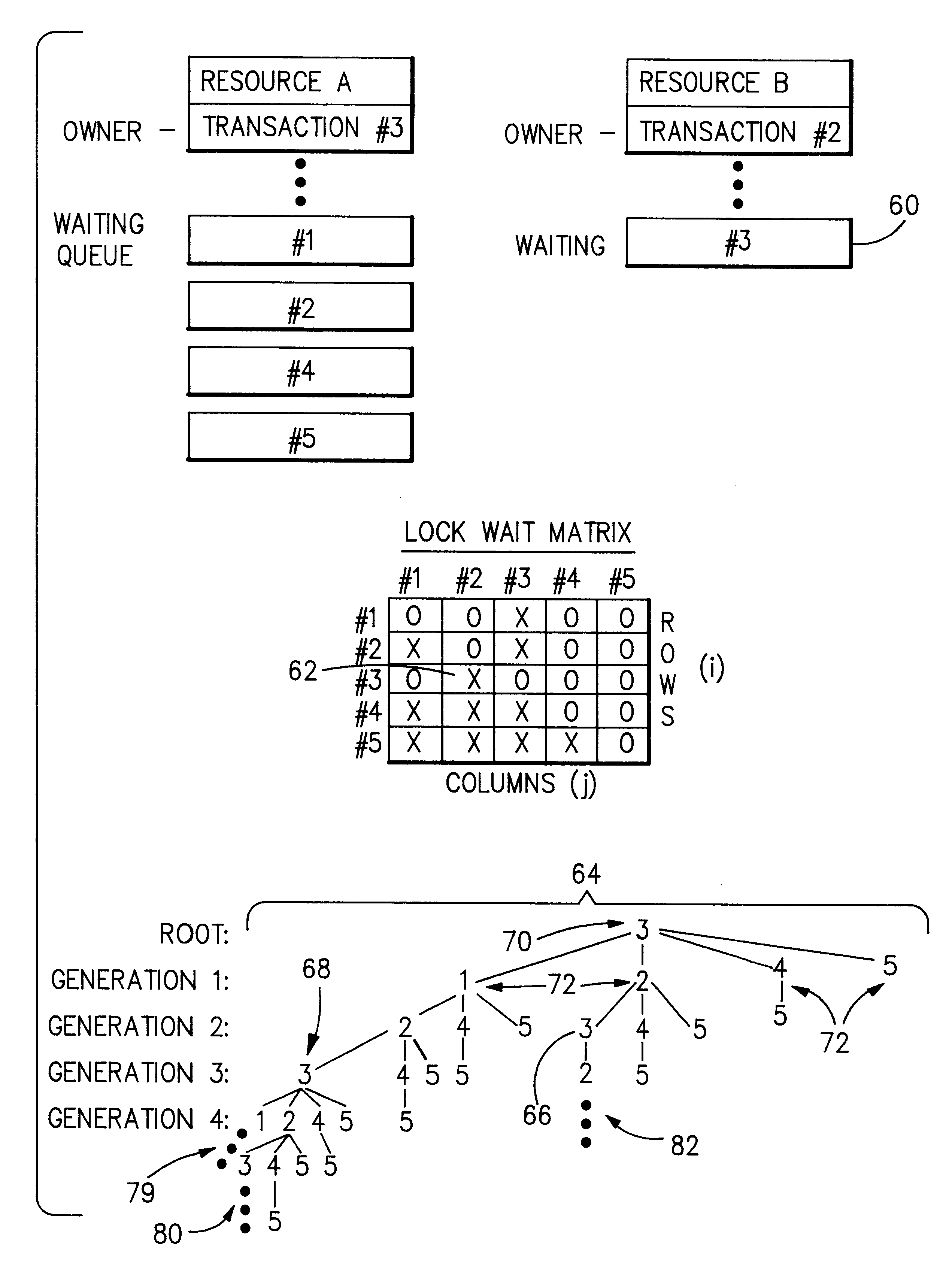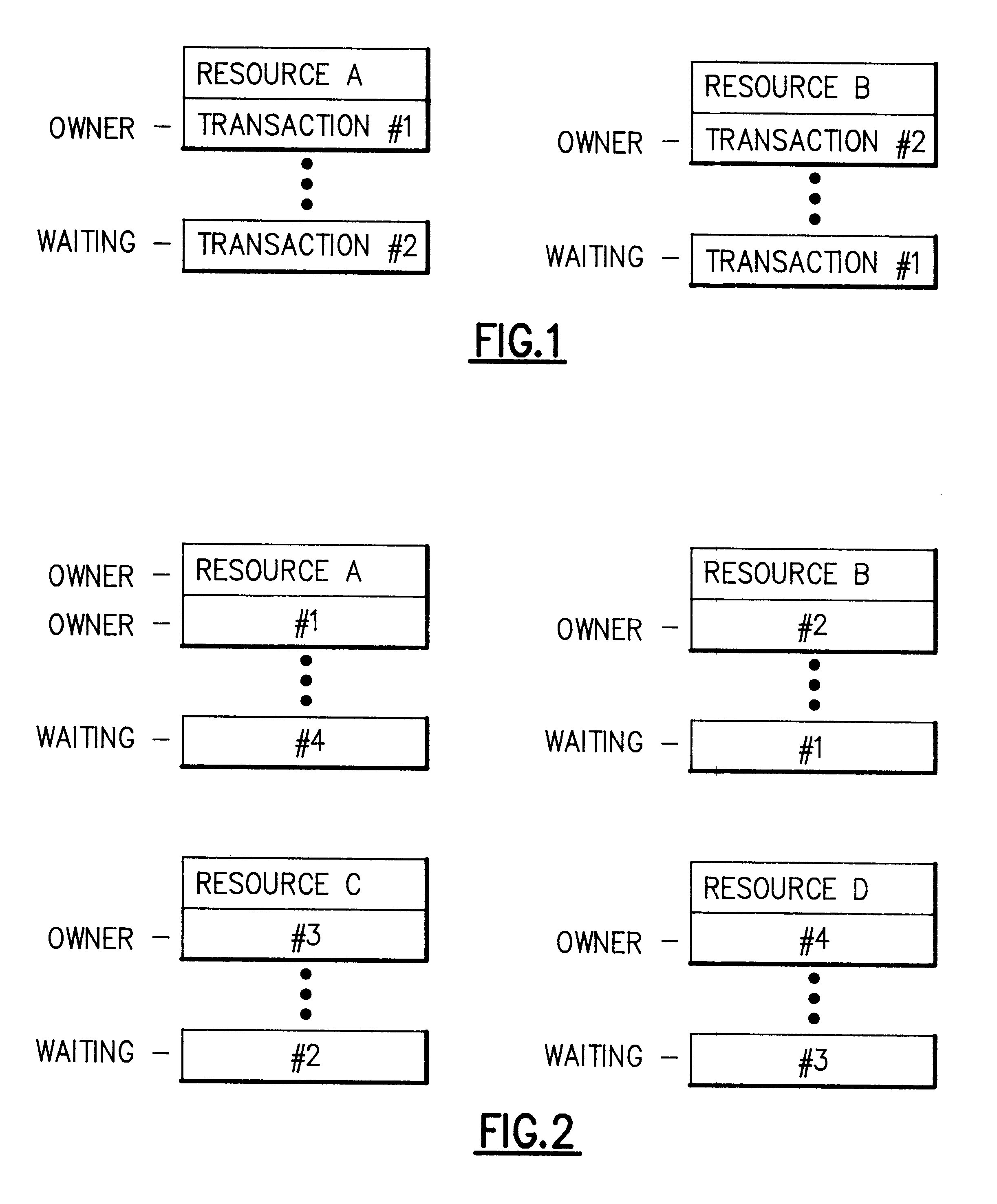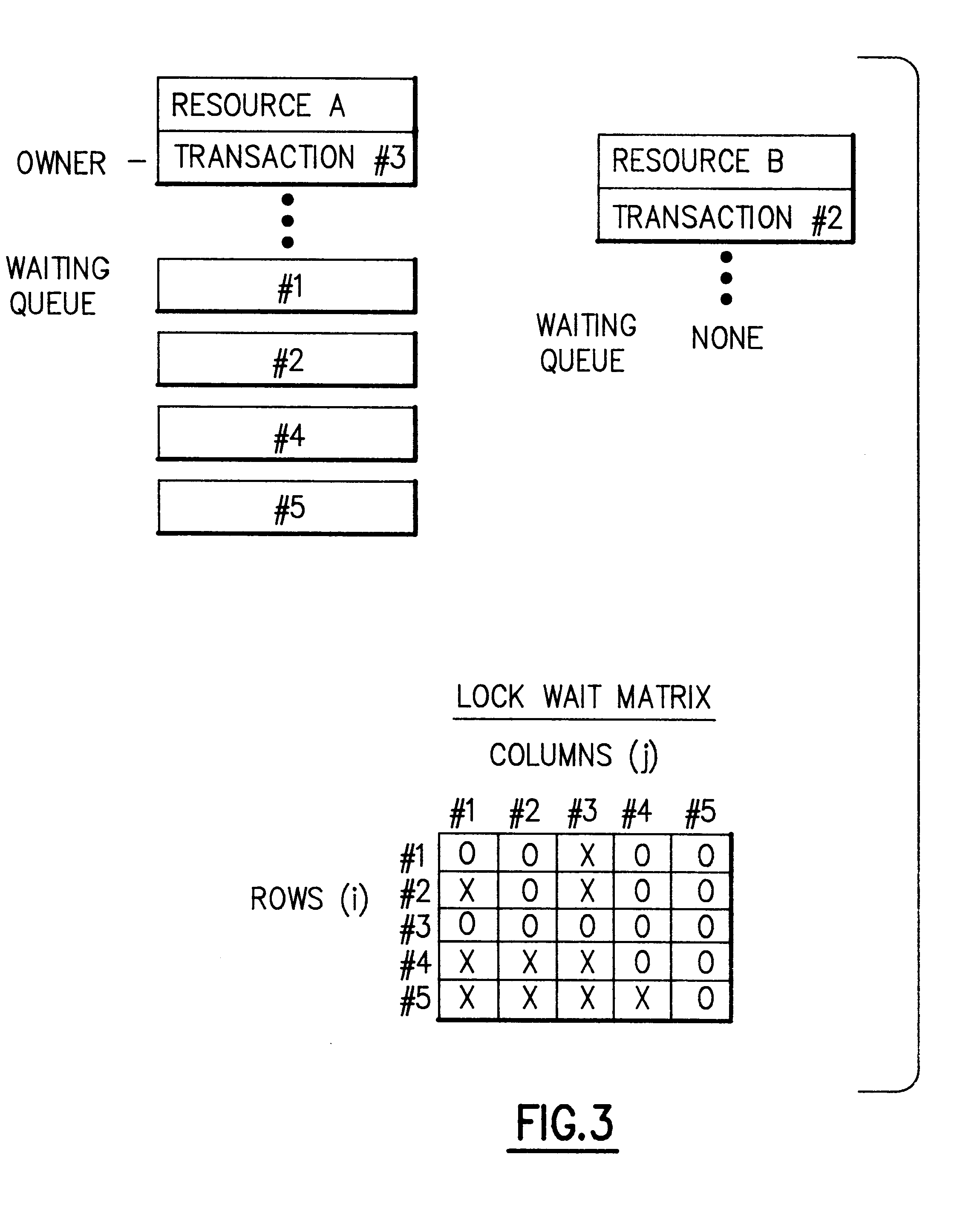System and method for reducing research time through a lock wait matrix
a technology of lock wait and research time, applied in the field of system and method for reducing research time through lock wait matrix, can solve the problems of all requests for resources being denied, deadlocks in computer systems, and deadlocks, and achieve the effect of shortening the time required to detect and resolve deadlocks
- Summary
- Abstract
- Description
- Claims
- Application Information
AI Technical Summary
Benefits of technology
Problems solved by technology
Method used
Image
Examples
case 1
ycle is detected and the newly created child is the same as the root node, then a new deadlock is detected (this type of cycle is shown in FIG. 7 at 79, 80, 82). In this case a particular transaction # is chosen as a victim in order to break the deadlock. As shown in the flow chart of FIG. 11 at 79, once a new deadlock is detected it becomes necessary to select either the root node transaction or another transaction as a victim. If the root node transaction # is chosen as a victim, then its request for a resource lock is denied 81 and all of its waiting relationships are removed 83 from the lock wait matrix. If another transaction # is chosen as a victim, then the victim is posted 85. Posting is the technique used to alert the victim that his request was denied. Posting makes the victim eligible to continue execution. Once the victim begins execution, the victim's waiting relationships are removed from the lock wait matrix (FIG. 11 at 87). Once the victim has been chosen, the WAIT t...
case 2
ycle is detected and the newly created child is not the same as the root node, then a previously resolved deadlock is detected. This type of deadlock occurs when the victim of a previously detected deadlock has not yet resumed execution and therefore has not yet updated the lock wait matrix. These types of deadlock are not interesting (because they have already been resolved). The deadlock detector ignores these type of deadlocks by pruning the newly created node from the WAIT tree. This is done in FIG. 12 at 99.
case 3
of the children of a particular transaction # have been traversed, there is no need to process that particular transaction # again (this includes the situation where a transaction has no children as well as the situation where a transaction is a parent node with children). The deadlock detector prunes all remaining branches involving that transaction number. This is done in FIG. 12 at 84.
In order to accomplish the traversing and pruning methods described above, the invention provides a CYCLE vector 86 to store the path of the WAIT TREE currently being processed, and a STATUS vector 88 to store the status of each transaction # (see FIG. 8). The size of each of the CYCLE and STATUS vectors must be equal to the maximum number of transactions which have access to the shared resources. Values are placed in the CYCLE and STATUS vectors as the deadlock detection processing occurs along one path of the tree at a time. In the preferred embodiment of the invention, such processing starts alon...
PUM
 Login to View More
Login to View More Abstract
Description
Claims
Application Information
 Login to View More
Login to View More - R&D
- Intellectual Property
- Life Sciences
- Materials
- Tech Scout
- Unparalleled Data Quality
- Higher Quality Content
- 60% Fewer Hallucinations
Browse by: Latest US Patents, China's latest patents, Technical Efficacy Thesaurus, Application Domain, Technology Topic, Popular Technical Reports.
© 2025 PatSnap. All rights reserved.Legal|Privacy policy|Modern Slavery Act Transparency Statement|Sitemap|About US| Contact US: help@patsnap.com



